Although growing fruit trees in pots have been done since ancient times, the advent of sophisticated container and soil technology makes it more accessible. Growing a fruit tree in a pot may be challenging, but with the proper knowledge and techniques, you can create a productive mini orchard in your backyard or balcony. This article will walk you through all the steps of growing a healthy fruit tree in a pot, from selection to planting and maintenance.
How to Get Started
1. Choose a Tree
Embark on your fruit tree planter project in the early spring, when the trees are in a dormant state, to ensure their optimal growth. While bare-root trees are preferred, potted nursery stock can also be used. It is recommended to purchase from a reputable mail-order company or a high-quality nursery between late January and March to secure the best selection of bare-root trees.
When selecting your trees, look for those that are vigorous with healthy-looking wood, and ensure they are free from any signs of desiccation, scuffing, bruising, or splitting. Take a moment to inspect the graft union, the area where the roots meet the trunk. Is it fully healed? Are there any cracks, dead tissue, or peeling bark? It is essential to ensure that the graft union is solid, as a weak union may result in the tree breaking years later under the weight of the fruit.
In addition to the graft union, choose a tree with a well-balanced shape, ideally with four to five solid, evenly-spaced branches. Although you may not see the roots, they are a critical factor in the tree’s success. Ensure the tree has plenty of undamaged, fine white roots (hair roots). The more healthy hair roots the tree has, the greater the chance of successful transplantation, as these are the tree’s lifeline for nutrients and water.
2. Best Fruit Tree to Plant in a Pot
- Apple trees can be grown in containers by using cordons to encourage branching out or by trimming back excess on the root ball. Plant more than one tree for pollination and choose varieties like Fuji and Honeycrisp, Pink Lady and Jonagold, Sierra Beauty, Liberty, or Gordon for cooking.

- Dwarf apricot variations like Stella and Stark Golden Glow flourish in containers. Choose low-chill varieties like Blenheim, Flora Gold, and Gold Kist if you live in a warm area. Use water-soluble fertilizer, keep them in sunny locations with well-draining soil, and harvest when the fruit is firm and yellow.
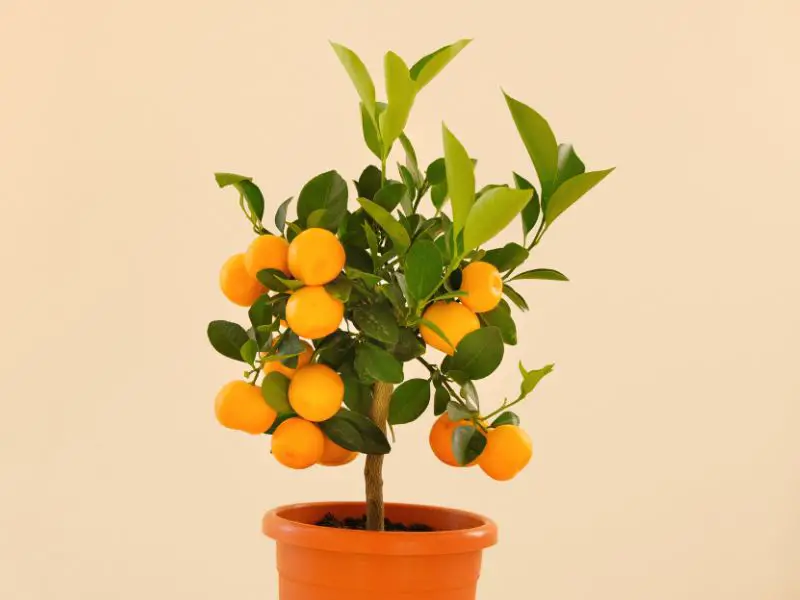
- Cherry trees like Stella, Lapins, Duke, and Morello grow well in containers and can be raised as a bush or on an espalier. Place netting to protect the fruit from birds and keep them well-watered.
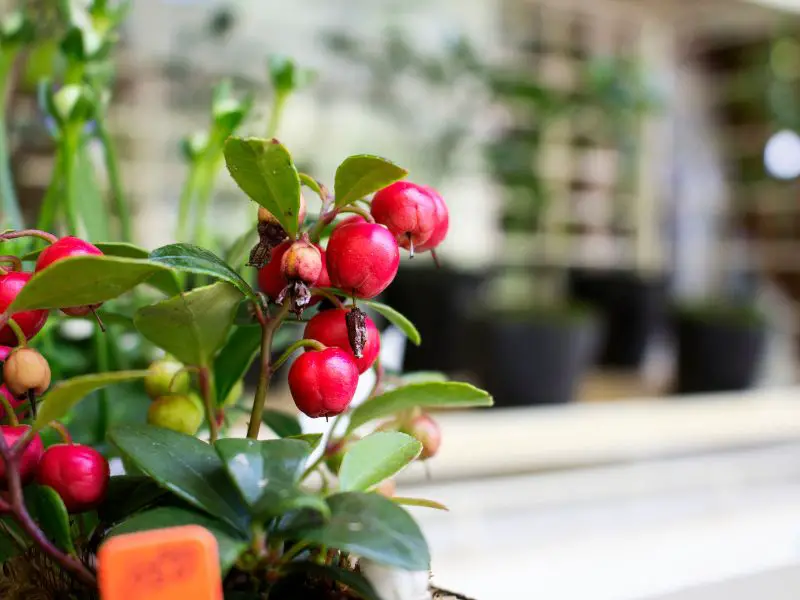
- Fig trees can be grown in containers and prefer pots with adequate drainage. Train them into one main trunk, but be careful when handling them, as some people can have an allergic reaction. Upgrade container as their root ball fills the space.
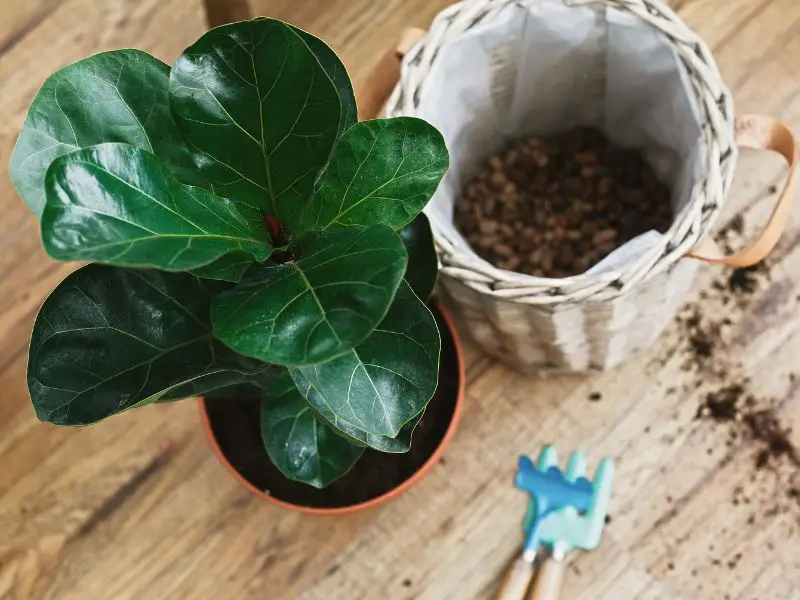
- Dwarf olive trees like Picholine or Arbequina thrive in a well-drained cactus mix and do well in drier air indoors. Ensure the variety you choose is fruit-bearing and expose them to cooler temperatures to encourage fruit production.
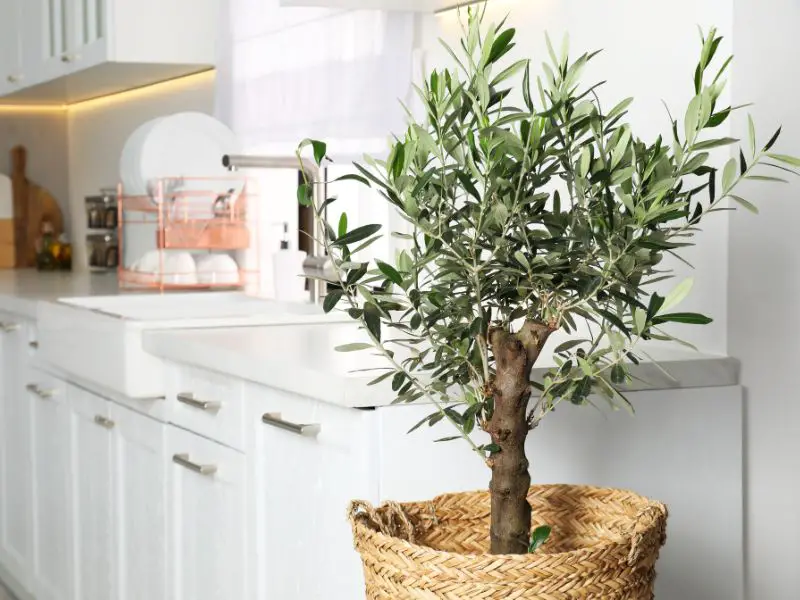
3. Choose the Appropriate Pot
Choose a pot at least 18 inches in size for optimal growth and ideally 20 inches or wider. Containers can be made from plastic, terra-cotta, wood, or ceramic.
Affordable and durable options include large half-whiskey barrels and plastic pots. Opt for lightweight plastic for easy mobility, and use a dolly or pot with wheels to transport the tree. Shelter the tree in a garage or shed during winter to prevent freezing.
Select high-quality potting soil for your container. Ask your local nursery for recommendations and choose a soil with necessary nutrients, such as bonemeal, blood meal, and bat guano. Avoid garden soil, which may not drain well and could harbor insects, weeds, or other problems.
Steps to Plant a Fruit Tree in a Pot
Step 1: Begin by clearing the drainage holes in a pot at least 18 inches wide. Include commercial planting mix with a pH of 6.5, firmly packing it down in the center of the pot to form a base for the roots. Gently moisten the soil.
Step 2: Tip the tree over and carefully remove it from the nursery pot, avoiding pulling it by the branches. Separate the roots from the soil, trimming off any that are overlong or damaged.
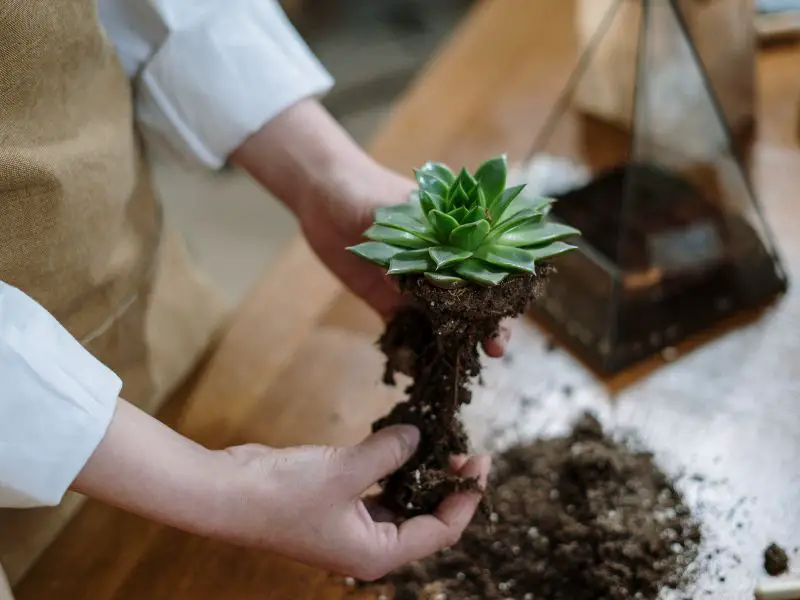
Step 3: Center the tree on the soil mound using a straightedge. Allow the roots to drape down around the mound, ensuring that the graft union of the tree is just above the final soil level. Adjust the mound level to ensure a secure fit.
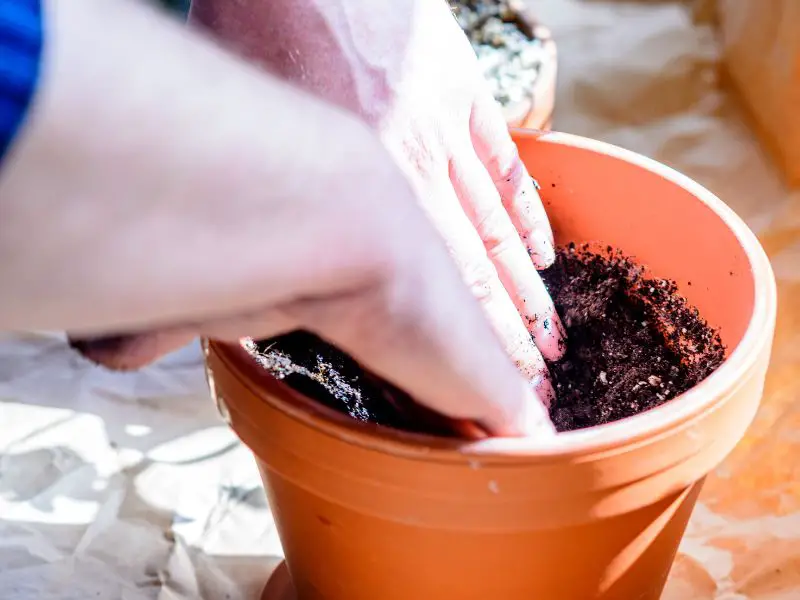
Step 4: After carefully positioning the fruit tree in its new home, it’s time to create a supportive foundation for its growth. Add the potting soil around the roots, taking care to fill the pot up to the graft union. Quick and efficient work is crucial at this stage to minimize the root’s exposure to the air, which can cause damage and hinder the growth of the tree. With a steady hand and a clear focus, you’ll set your fruit tree on a path to flourish in its new container.
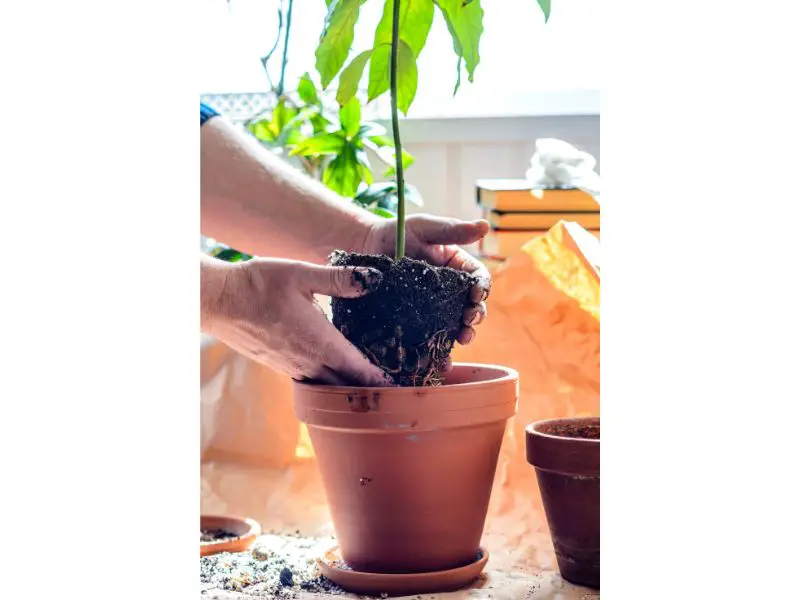
Step 5: Water the tree thoroughly, allowing the soil to soak and drain to eliminate air pockets. If settling occurs, add more potting soil and repeat the process.
Step 6: Support the young tree using a 1×1 trellis anchored in the pot or bamboo stakes. Tie the tree loosely to the support to prevent damage. Avoid using rigid ties that could harm the tree.
How to Care for a Fruit Tree in a Pot
Step 1: Ensure potted fruit trees receive direct sunlight for six to eight hours daily. Place containers in direct sunlight in the morning and early afternoon to avoid damage from the hot afternoon sun. Consider using wheeled carts or a dolly to move the containers with ease.

Step 2: Potted fruit trees require frequent watering because the soil dries out more quickly than ground soil. Check the containers every morning and evening and water the plant when the top inch or two of soil becomes dry. Using spoiled milk as a fertilizer can stave off powdery mildew and add nutrients to the soil.
Step 3: Apply a balanced 10-10-10 water-soluble fertilizer every two weeks, following the manufacturer’s instructions for dilution and application frequency. Avoid applying fertilizer after mid-to-late summer to prevent new, tender leaf growth entering the winter months.
Step 4: Ensure good drainage for potted fruit plants by adding horticultural or washed playground sand to the potting soil before planting. Setting the plant off the ground with planter “feet” or bricks can also improve drainage and prevent ants from entering.
Step 5: Prevent toppling by placing gravel at the bottom of fruit tree pots to prevent them from becoming top-heavy. Taller fruit trees may need stakes or trellises to remain upright when bearing fruit.
Step 6: Move containers indoors over the winter months, even for hardy fruit trees and bushes grown in containers. A garage with minimal temperature drops or a basement or cool room is suitable. Lightly water the plants over the winter when the soil becomes dry.

How to Maintain a Fruit Tree in a Pot
Step 1: Set your fruit tree planter in a sunny, sheltered location to protect it from strong winds that can damage the tree and dry out the soil in the container. Water the tree thoroughly when the soil dries about an inch deep.
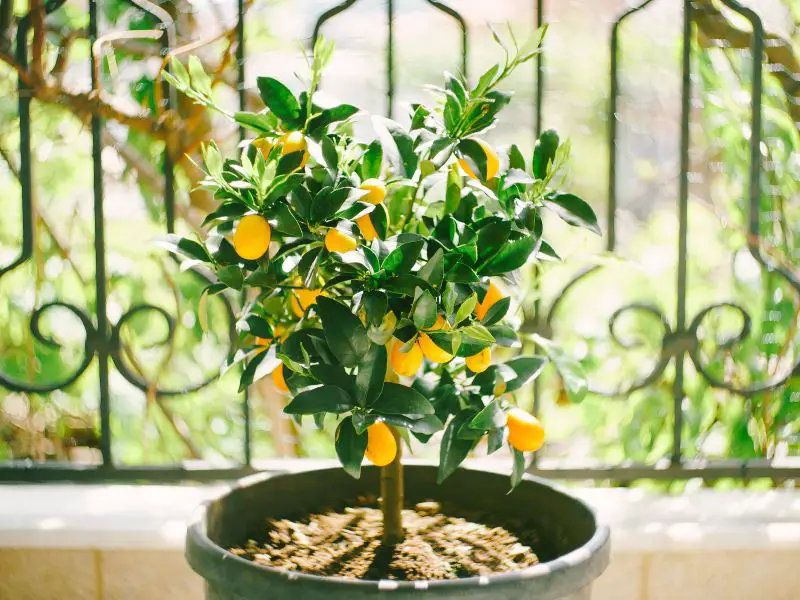
Step 2: Avoid over-pruning your fruit tree, limiting it to severely damaged, broken, diseased, or crossing branches. This will allow the tree to develop and establish a healthy structure.
Step 3: Every two to three years, remove the tree from its container, prune the roots to prevent them from circling, and replace the soil with a new potting mix before replanting the tree. This may be the most challenging task, but it’s essential for the tree’s health.
Step 4: Allow the tree to flower during the first two to three seasons but pinch off developing fruit. If the tree bears fruit too soon, it won’t establish sufficient roots and wood strength. This may result in a crooked growth pattern, failure to develop new branches, and, eventually, the tree may break. Patience is key.
By following these steps, your fruit tree will thrive in its container, and you’ll enjoy the delicious fruits of your labor for years to come.
Bottomline
Growing fruit trees in pots is a great way to enjoy fresh, homegrown fruit in a small space. Choosing the correct container and soil, placing it in a sunny, sheltered location, and regular watering, fertilizing, pruning, and repotting can lead to a bountiful harvest. With patience and care, growing fruit trees in pots can be a rewarding and enjoyable experience. Enjoy!
Explore Urban Garden, Desert Permaculture, and Permaculture Plants. From transforming cityscapes to thriving in arid landscapes, discover sustainable gardening practices and permaculture plants that thrive in diverse environments.
Equip yourself with the right gear for successful gardening. Discover a range of planting tools to make sowing, transplanting, and tending to your plants a breeze. Cultivate a thriving garden with the help of these must-have essentials.

